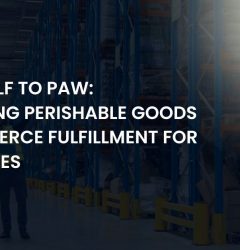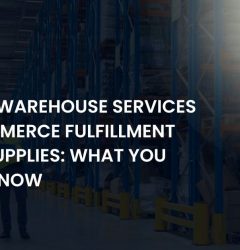31 Jan
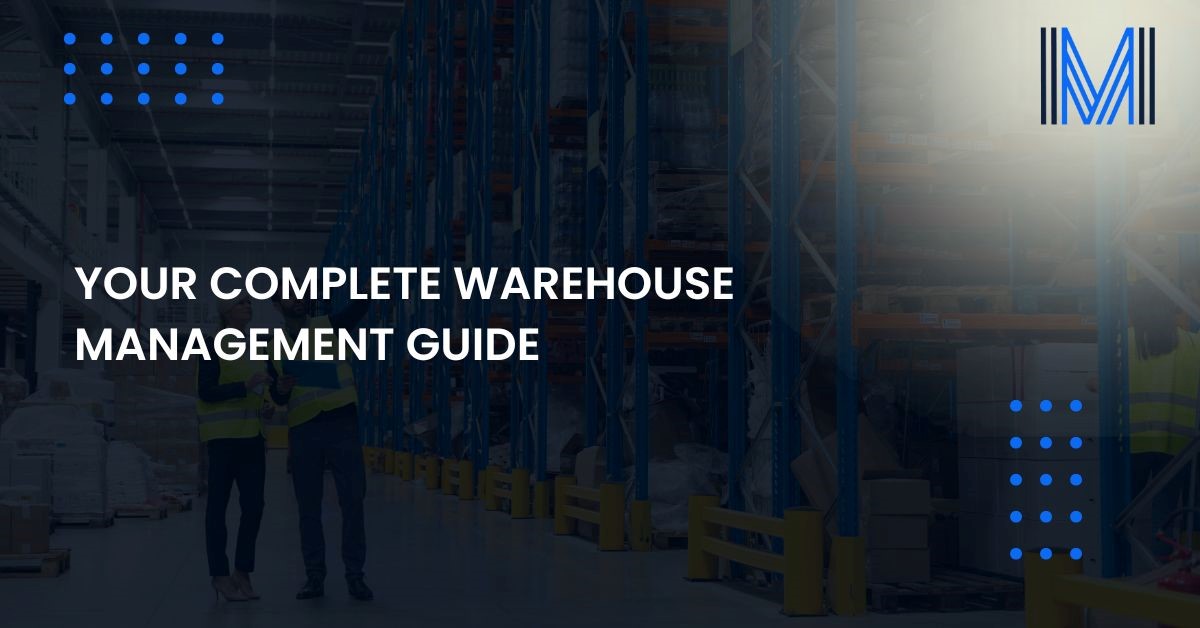
Table Of Contents:
1. Introduction
2. What Is Warehouse Management?
3. The Essential Warehouse Management Processes
4. What Is A Warehouse System
5. What To Look For In A Leading Warehouse Management System
6. How Can Warehouse Management Help Ecommerce Businesses
7. The Benefits Of Working With A 3PL For Warehouse Management
8. Meteor Space Offers Advanced Warehouse Management Software
9. Team Up With A Leading 3PL For Your Warehouse Management
10. Warehouse Management FAQs
Introduction
In the fast-paced world of ecommerce, managing warehouse operations effectively is a key determinant of success. With online shopping booming and customers expecting faster delivery times than ever before, businesses are feeling the pressure to streamline their operations. Warehouse management, which involves tracking inventory, processing orders, and ensuring products reach customers quickly and safely, has become more complex and crucial.
Many businesses, particularly small ecommerce stores, struggle with the intricacies of warehouse management. These challenges can lead to inefficiencies, missed opportunities, and dissatisfied customers. That’s where an effective warehouse management system (WMS) comes in. In this blog, we’ll explore what warehouse management is, its essential processes, the benefits of using a WMS, and how partnering with a third-party logistics provider (3PL) can take your business to the next level.
What is Warehouse Management?
Warehouse management refers to the processes and systems used to manage the operations within a warehouse, including inventory management, receiving and shipping products, and maintaining order accuracy. This process ensures that products are stored, tracked, and moved efficiently, ultimately supporting the timely delivery of goods to customers.
Effective warehouse management is essential for businesses of all sizes, particularly those in ecommerce. As e-commerce continues to grow, the demand for timely and accurate order fulfillment increases. Companies must find ways to improve their efficiency and reduce costs while ensuring their customers are satisfied.
Warehouse management involves several core components:
1. Inventory Management: Keeping track of the quantity, location, and status of inventory within the warehouse. This includes monitoring stock levels, managing reorder points, and ensuring products are properly rotated.
2. Order Fulfillment: The process of picking, packing, and shipping customer orders. Efficiency in this process is essential for meeting customer expectations regarding delivery times.
3. Receiving and Storing Inventory: This involves receiving products from suppliers, inspecting them for quality, and storing them in the appropriate location within the warehouse.
4. Shipping and Delivery: The final step of the warehouse management process, where products are packed, labeled, and shipped to customers or retail locations.
The Essential Warehouse Management Processes
To maintain smooth operations and meet customer expectations, businesses must focus on key warehouse management processes. Below, we’ve expanded on the most essential processes that form the backbone of warehouse operations.
1. Inventory Tracking
Inventory management is a crucial process within warehouse management. Proper tracking ensures businesses know exactly what they have in stock, where it is located, and how much inventory is available for sale. There are several methods for inventory tracking, ranging from manual counting to automated systems like barcodes or RFID technology.
- Manual Inventory Tracking: This method involves physically counting products and recording them by hand or in a spreadsheet. While it’s simple, it’s also prone to errors and is labor-intensive.
- Barcode Scanning: Using barcodes to track inventory has become a common practice in many warehouses. Barcodes allow warehouse workers to scan items as they are moved, tracked, or shipped. This method is more efficient and less prone to error than manual tracking.
- RFID (Radio Frequency Identification): RFID technology involves attaching tags to products that can be scanned remotely. This system allows for real-time tracking of inventory, reducing the chance of human error and increasing operational efficiency.
Mistakes in inventory tracking can lead to stockouts, overstocking, or even missing products. Implementing an automated system significantly reduces these risks and ensures accurate and timely tracking.
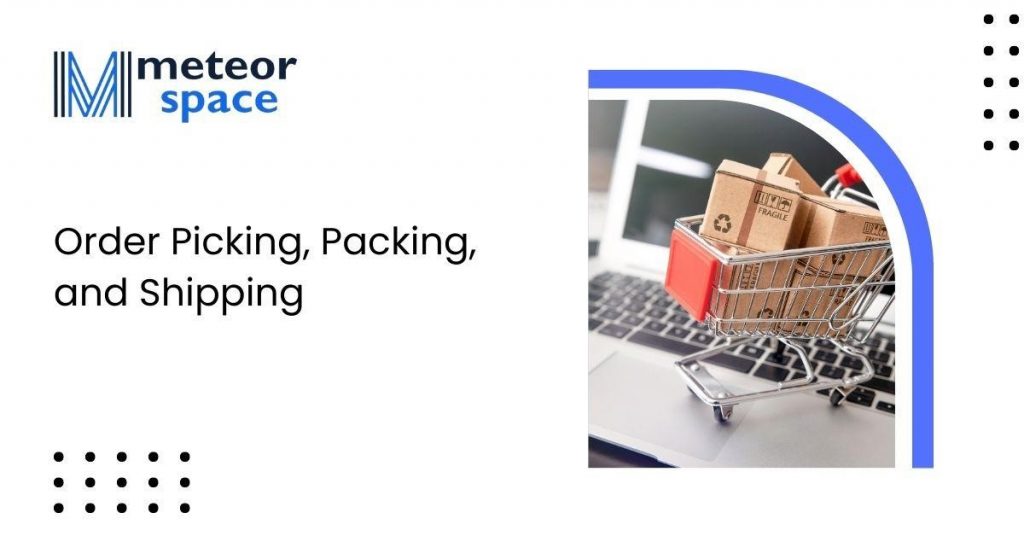
2. Order Picking, Packing, and Shipping
Order fulfillment is one of the most important processes in warehouse management. It’s the step where products are physically picked from storage, packed, and prepared for shipment. The faster and more accurately this process is, the better the customer experience.
- Picking: Involves retrieving items from storage to fulfill customer orders. There are several methods, including single order picking, batch picking (picking multiple orders at once), and zone picking (where different areas of the warehouse are responsible for different types of products).
- Packing: Once items are picked, they are packed for shipment. Packaging materials are critical, not just for protecting the products during transit but also for enhancing the customer’s unboxing experience. Businesses often look to improve their packaging techniques to minimize waste and reduce shipping costs.
- Shipping: The final step involves labeling the products, determining the best shipping methods, and dispatching them. Timely shipping is crucial for ensuring customer satisfaction, especially in today’s environment of fast delivery expectations.
Modern warehouse management systems use automation to streamline picking and packing. For example, voice picking, where workers receive instructions through a headset, helps increase efficiency. Automated sorting systems and robots can also reduce human error and speed up the entire fulfillment process.
3. Receiving And Storing Inventory
In order to effectively manage warehouse operations and be able to track the goods that have been received and the goods that have been sold, an essential step is to have a proper receiving and storing process.
Receiving goods is the process of accepting goods at the warehouse, storing them and loading them onto a truck. The goods are then delivered to the warehouse to be sold. When you are receiving inventory, make sure that you understand your warehouse’s inventory policies.
These policies will outline how much inventory you are allowed to carry on hand, on the shelves, and in the warehouses. This will help you to avoid running out of stock. Additionally, when you are receiving inventory, ensure that you have a well-thought-out plan in place.
This includes understanding what your warehouse is capable of carrying, and how much inventory you will need over the next few months. Additionally, make sure that you are assigning people to the proper roles and responsibilities based on their abilities.
4. Inventory Reporting And Forecasting
Inventory reporting and forecasting are the most important processes in warehouse management. The inventory reporting process is where the warehouse management system (WMS) gathers data on what is in stock, what is on order, and what is on order but not yet received.
The forecast process is where the WMS calculates what is expected to be in stock, on order and on order but not yet received, and what is expected to be sold. Inventory is the lifeblood of any warehouse, and planning the right amount of inventory stock is essential to the success of your business.
It is not enough to just plan your inventory, you must also maintain a metric that allows you to be able to forecast its future demand. If you cannot forecast demand, you may be overstocking or understocking inventory.
Inventory forecasting is a crucial part of warehouse management. Moreover, inventory forecasting is critical to the success of your business.
What is a Warehouse Management System (WMS)?
A Warehouse Management System (WMS) is a software solution designed to optimize warehouse operations. WMS tracks inventory, manages order fulfillment, and controls warehouse processes such as receiving, picking, packing, and shipping. The primary goal of a WMS is to improve the efficiency and accuracy of warehouse operations.
Historically, WMS was used primarily by large enterprises with significant warehouse needs. However, as technology has become more accessible, even small businesses can benefit from using a WMS.
There are two primary types of WMS:
- On-Premise WMS: This traditional system is hosted on a company’s own servers and requires regular maintenance and updates. On-premise WMS can be highly customized but tend to be more expensive upfront.
- Cloud-Based WMS: A more modern solution, cloud-based WMS offers scalability, remote access, and less maintenance. It’s ideal for businesses with fluctuating warehouse needs or those looking to expand their operations quickly.
Cloud-based WMS solutions also offer real-time data, which is critical for businesses that need to make quick decisions based on current inventory levels, order statuses, and shipping information. Some popular WMS platforms include NetSuite, TradeGecko, and Fishbowl.
What to Look for in a Leading Warehouse Management System
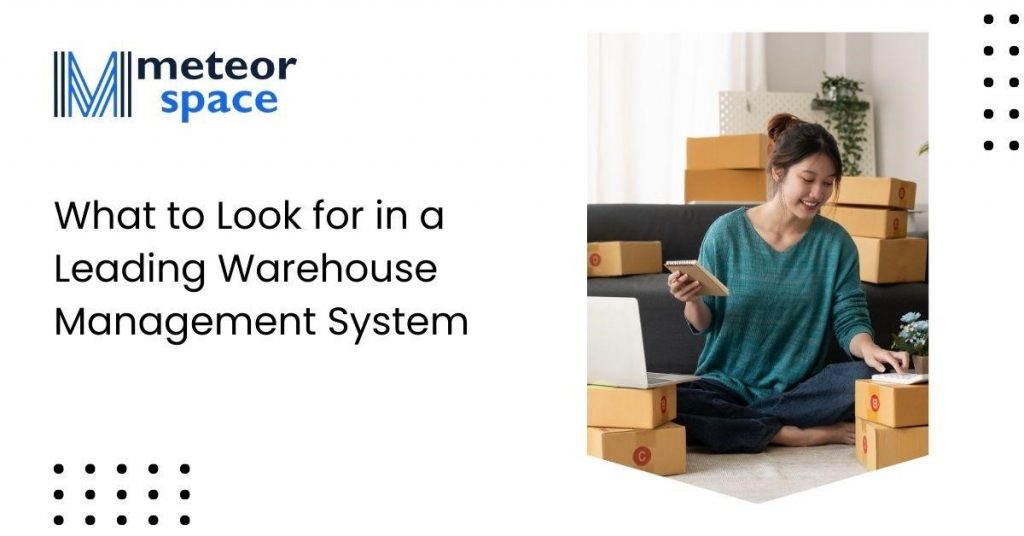
When selecting a WMS, there are several key features businesses should prioritize to ensure they’re getting the best solution for their needs.
1. Scalability
As your business grows, your warehouse management needs will evolve. A scalable WMS can easily adjust to increasing order volumes, inventory levels, and the addition of new warehouse locations. This scalability is vital for companies that plan to expand their operations or enter new markets.
2. Integration with Existing Systems
A leading WMS must integrate seamlessly with existing systems, including ecommerce platforms (such as Shopify, Amazon, and BigCommerce), accounting software, and ERP systems. Integration helps automate order processing, ensuring accuracy and reducing the risk of errors.
3. Real-Time Data and Analytics
Real-time data is essential for making quick, informed decisions. Look for a WMS that provides live updates on inventory levels, order statuses, and shipping progress. Real-time analytics also help businesses forecast demand, plan for restocking, and optimize the supply chain.
4. User-Friendly Interface
A WMS with a complex or unintuitive interface can slow down warehouse operations. The best WMS platforms offer easy-to-use dashboards, quick data retrieval, and clear reporting functions.
5. Reporting Capabilities
Accurate reporting is essential for business planning and decision-making. A WMS should generate detailed reports on inventory levels, order history, and warehouse performance. These reports help businesses identify inefficiencies and optimize operations.
6. Compatibility with Warehouse Equipment
The WMS should integrate well with warehouse equipment, such as automated storage and retrieval systems (ASRS), conveyors, and barcode scanners. This compatibility reduces manual labor and increases efficiency.
How Can Warehouse Management Help Ecommerce Businesses?
Warehouse management plays a pivotal role in helping ecommerce businesses succeed. Efficient warehouse operations can reduce costs, increase order accuracy, and improve delivery times—all of which contribute to higher customer satisfaction and repeat business.
1. Faster Order Fulfillment
The ability to pick, pack, and ship orders quickly is essential in the competitive ecommerce landscape. An efficient warehouse management system reduces the time it takes to fulfill each order, ensuring that customers receive their purchases faster. Automation and advanced picking strategies like voice picking and pick-to-light systems can help reduce human error and speed up the process.
2. Enables Your Business’s Logistical Growth
As your ecommerce business grows, managing logistics becomes more challenging. A robust WMS enables businesses to scale efficiently by streamlining processes, reducing manual labor, and improving inventory visibility. Whether expanding to new locations or handling more inventory, a WMS helps businesses manage growth without compromising service levels.
3. Improved Storage Allocation
An optimized WMS helps businesses maximize warehouse space by utilizing various storage methods such as zone picking (storing similar items together) and dynamic slotting (assigning products to locations based on demand). These techniques help increase efficiency and reduce travel time within the warehouse.
4. Better Customer Service
Accurate inventory management leads to fewer stockouts and backorders. With the ability to quickly and accurately process orders, ecommerce businesses can offer faster shipping and improve customer satisfaction.
The Benefits of Working with a 3PL for Warehouse Management
1. Better Use Of Warehouse Space
When it comes to warehouse management, finding the right partner is crucial. Warehouse management is a vital part of any business, but it can be challenging to find the right partner to help with your needs. If you’re looking for someone to assist you, make sure you’re considering the benefits of working with a 3PL.
The most important reason to work with a 3PL is that you can leverage their experience and knowledge to better utilize your storage space. If you’re looking for a UK fulfillment provider, you’ll want to ensure that they have access to advanced warehouse management software, especially if you’re seeking a partner for efficient order fulfillment services.
A 3PL can help you maximize the usage of your warehouse by optimizing your storage space. Warehouse management software can help you make the most of your warehouse space in a cost-effective way. Just like any other space, warehouse space is valuable.
When you use a 3PL, you’ll be able to reduce your costs by using less space while still maintaining a warehouse that can store all of your products. Ecommerce fulfillment services can make a significant impact here by ensuring that your stock is organized and easily accessible.
2. Save More Time
When you’re looking for a warehouse management solution, it can be overwhelming to choose the right one. However, working with a 3PL can help reduce the time and cost of your warehouse management.
With a 3PL service, you can avoid the need for warehouse staff to attend to minor issues. Additionally, 3PL services help prevent the need for unplanned overtime and the associated costs.
As a business owner, you want to save time and be more efficient. One of the best ways to achieve this is by partnering with a 3PL. A leading 3PL can help you save more time by handling logistics and by preventing last-minute surprises.
When you work with a 3PL, you’ll get more done and spend more time focusing on what you do best. By teaming up with a top-notch 3PL, you can accelerate your business growth without worrying about the logistics of ecommerce fulfillment for electronics or other product categories.
3. Optimized Logistics
Warehouse management is one of the most challenging aspects of running a business, but partnering with a 3PL offers many benefits. Ecommerce fulfillment services can help streamline your logistics and improve how you manage your stock, inventory, and shipments. A 3PL can also help you avoid delays, reduce shipping costs, and ensure timely deliveries.
A leading 3PL will utilize data to predict product demand and upcoming trends, enabling you to generate more accurate inventory forecasts. This helps optimize your logistics operations, ensuring that everything runs as smoothly as possible, from your order fulfillment services to stock replenishment.
4. Increase Your Reach
When choosing a 3PL, it’s important to consider their flexibility. Some companies offer basic services, while others provide more extensive offerings. If you want to expand your business and reach more customers, you need a 3PL that offers more than just basic services and has the capacity to help you scale.
A 3PL that offers access to diverse locations globally will enable you to grow your business quicker and more effectively. For example, if you need to expand your presence in the UK, working with a provider who offers reliable UK fulfillment can help you gain easier access to the market.

5. Advanced Technology for Real-Time Insights
Warehouse management is complex, but leading 3PLs bring cutting-edge technology to the table. By utilizing advanced technology, such as electronics warehousing storage solutions, they can help streamline your logistics operations. The use of such technologies allows for near real-time monitoring, which helps optimize inventory management, order fulfillment, and much more.
By working with a 3PL that integrates the latest technology, you can gain insights into your supply chain that drive smarter business decisions. This real-time visibility into operations is invaluable for staying ahead of the competition and ensuring that your order fulfillment services are as efficient as possible.
Conclusion
Warehouse management is a critical component of any successful ecommerce operation. Efficient management of inventory, order fulfillment, and shipping can make or break your business in today’s competitive market. Implementing an advanced WMS and working with a trusted 3PL can help streamline operations, reduce costs, and improve customer satisfaction.
If you’re looking to enhance your ecommerce fulfillment services or find the best order fulfillment services, investing in the right warehouse management solution is essential. Whether it’s a UK fulfillment partner or specialized services like electronics warehousing storage solutions, choosing a provider with the right expertise can set your business up for long-term success.
Warehouse Management FAQs
1. What is warehousing?
Warehousing is one of the most important parts of logistics for any retail business. It is the storage and distribution process of goods. Warehousing includes the storage of raw materials, semi-finished goods, finished goods, and components. It may also include the storage of both goods and materials in transit between the manufacturer and the warehouse. Most of the time, warehousing can include the storage and distribution of goods to consumers, retailers, and other locations.
2. What are among the top ecommerce shipping services that the UK and Europe have to offer?
One of the top companies offering ecommerce shipping in the UK and Europe is Meteor Space. We run our business from a cutting-edge ecommerce fulfillment facility in Northern Ireland, and we provide a variety of delivery options, including next day, standard, and express. If you sell products online and are seeking for a dependable and reputable distributor to handle your shipping requirements, our ecommerce shipping in the UK is perfect for you.
3. Can Meteor Space offer me ecommerce shipping options that are suitable for my company’s needs?
Unquestionably, an online shipping strategy is one of the most crucial components of an online retail business. Since we started our company, Meteor Space has offered ecommerce shipping solutions in the UK and Europe to all of our clients. Our company’s current success is a result of our dedication to offering some of the best ecommerce shipping services the UK has to offer, something we take great pride in. In order to give our customers the most value for their money, we pay attention to your company’s needs and customise our ecommerce shipping solutions accordingly. To learn more about our ecommerce shipping charges, get in touch with us.

